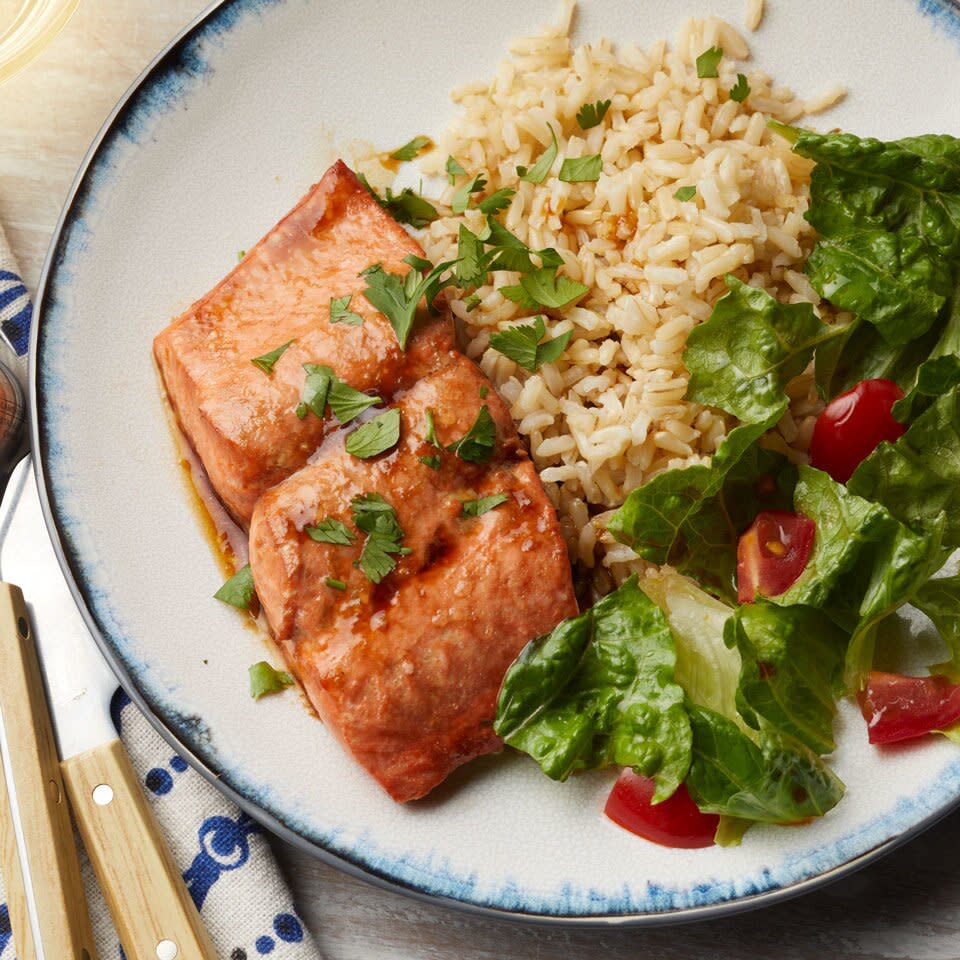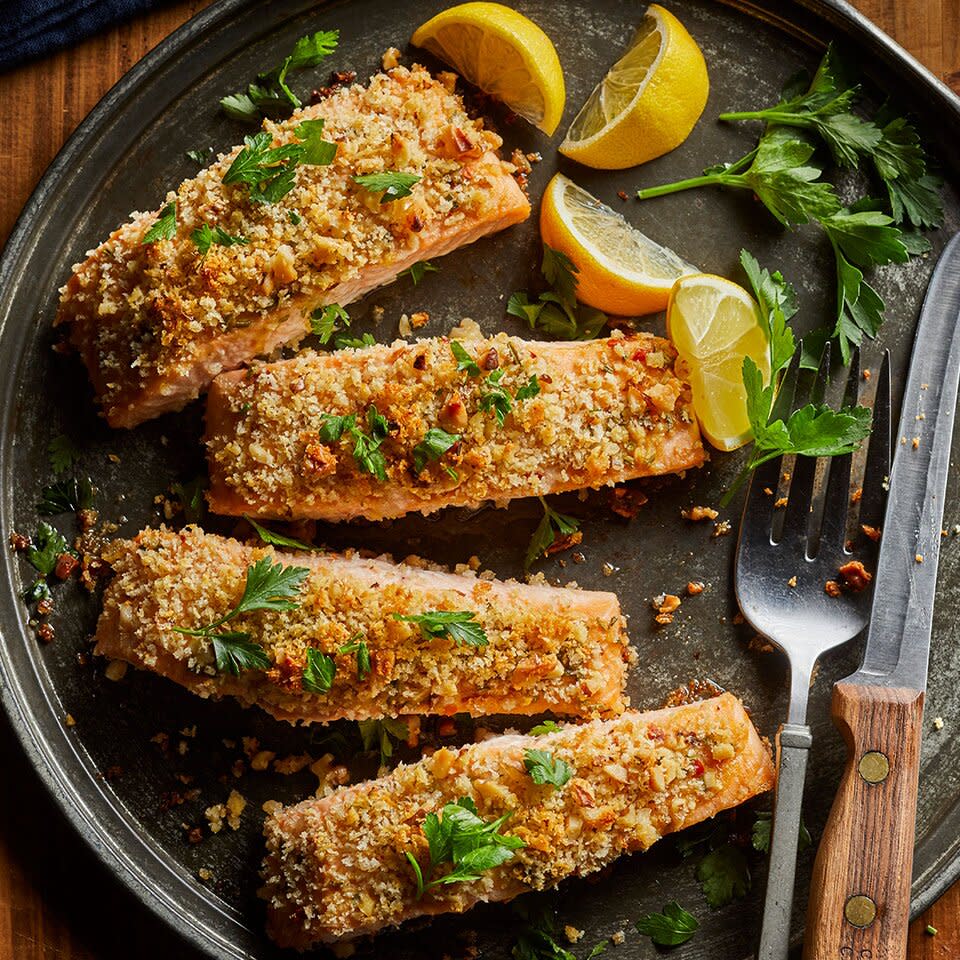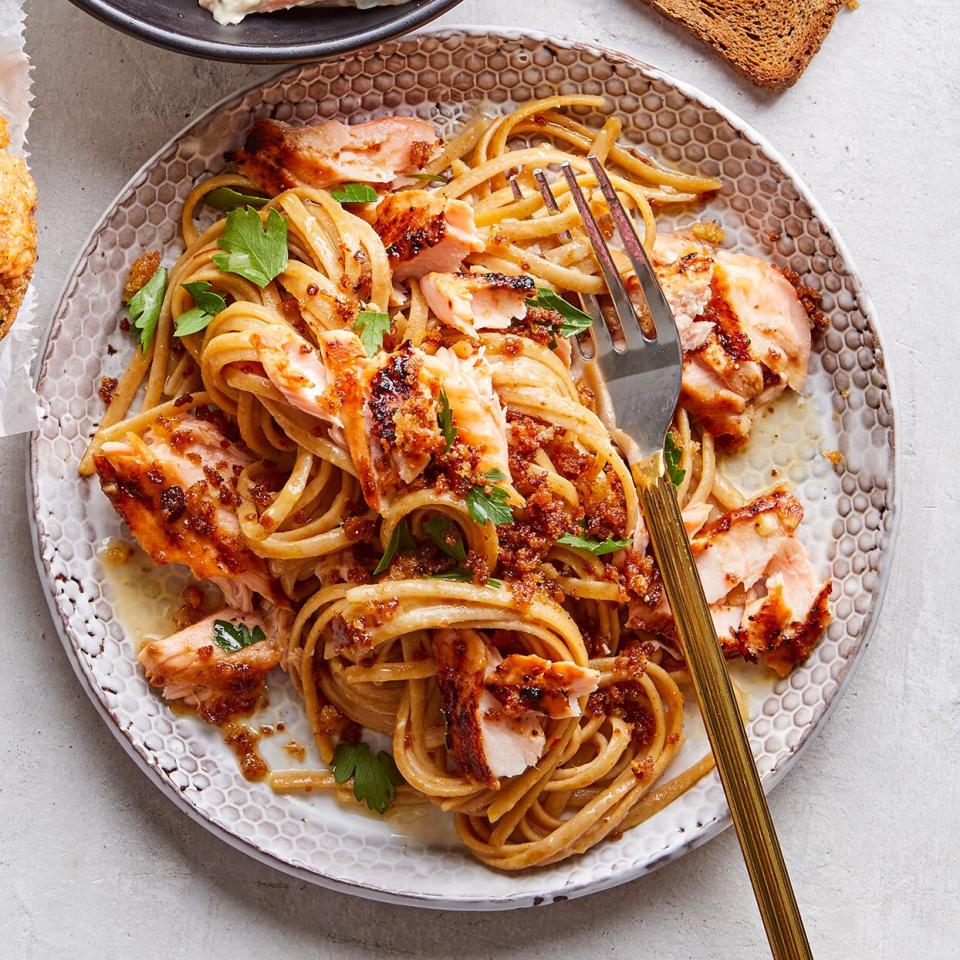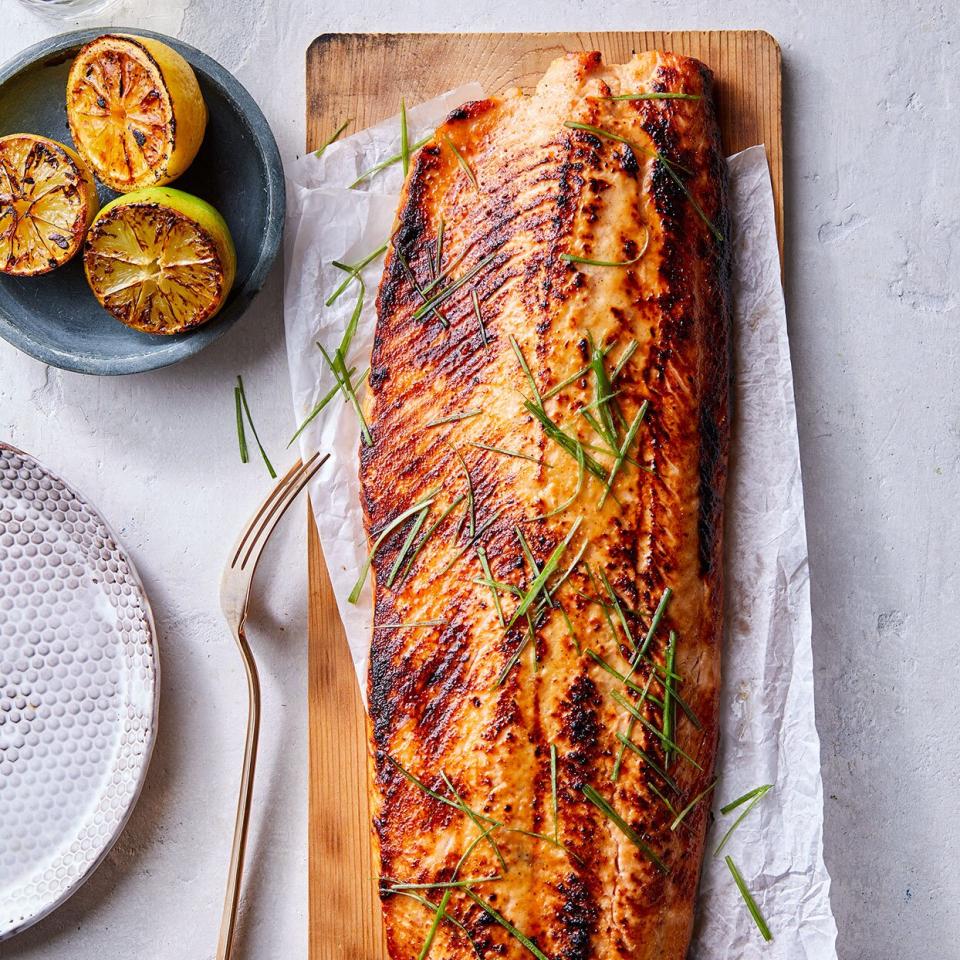What Are the Types of Salmon and Which One Should You Buy?

Pictured Recipe: Honey-Garlic Salmon
People love salmon. This should make doctors happy: U.S. Dietary Guidelines recommend Americans eat two servings of fish a week. It's loaded with heart-healthy, brain-boosting omega-3 fats. On top of that, there are so many different types of salmon and ways to serve them that it would be hard to get bored with this fish.
But that said, there are certain types of salmon that some people try to stay away from and certain questions that savvy shoppers always ask before they buy. To help you out, we answer seven common questions so you can buy the best salmon.
1. Wild or Farmed?
The first choice you should make is whether to buy wild salmon (and all Alaska salmon is wild-caught) or farmed Atlantic salmon (fishing wild Atlantic salmon is illegal in the United States).
Environmental groups like Seafood Watch and Environmental Defense Fund have created a salmon buying guide to help you to make an informed choice. They recommend choosing the following:
U.S. wild-caught: All except for "Chinook salmon caught in the Puget Sound Chinook fishery and coho salmon caught in the Columbia River above the Bonneville Dam."
Imported wild-caught: Chinook and coho salmon from Canada, except for those caught from British Columbia's South Coast.
Farmed: Varieties from New Zealand; Atlantic salmon farmed in Maine, Faroe Islands, Norway (Production Areas 1, 12 or 13), Scotland's Orkney Islands, Nova Scotia and Chile (Region XII Magallanes); Chinook salmon farmed in British Columbia.
Since there is no seafood labeling system in place at fish markets, fish counters of grocery stores and eateries for fresh, you may need to ask the vendor some questions to find out the fish's origin, if the packaging provides limited information:
What country is the fish from?
Is the fish wild-caught or farm-raised?
If it is farmed, was it grown in an open net pen or in a contained tank or pond?
If it is wild, do you know how it was caught?
2. Should You Buy Organic Salmon?
Currently, the USDA does not certify fish and seafood. The USDA National Organic Program is developing standards and labeling regulations around farmed fish and seafood production. In other words, if you see the word "organic" label on the salmon, you can assume that the fish is farmed instead of a wild variety.

Pictured Recipe: Walnut-Rosemary Crusted Salmon
3. Is Fresh Salmon Better than Frozen? What about Canned or Packaged?
You can order fresh salmon by mail order or find it in your markets year-round, depending on where you live. Most fish is flash-frozen when caught to preserve its freshness and allow for shipping. Frozen salmon is good for up to four months when properly frozen and thawed overnight in the refrigerator. Canned wild salmon is an excellent and economical choice. Look for BPA-free cans or pouches.
4. Does Salmon Carry PCBs or Other Toxins?
PCBs (aka polychlorinated biphenyls) were a common industrial chemical until the 1970s but are now banned. Unfortunately, PCBs can be found in soil, water and air. A 2020 Norwegian study published in Foods noted that wild salmon carry a higher content of PCBs than farmed salmon. Another study from Environmental Research published in 2017 found that wild Atlantic salmon also had more persistent organic pollutants (POP) than farmed salmon. Sources of POPs include pesticides and industrial chemicals. The higher concentrations of PCBs and POPs present in wild varieties could be due to the pollutants in the ocean and the fishmeal. Salmon in the wild consume smaller fish, such as mackerel, which may also carry the pollutants.
The same Norwegian study noted that wild Atlantic salmon has higher levels of mercury than farmed but is still well below the European standards of the maximum allowed in food. Nevertheless, salmon is generally a low-mercury fish and is recommended to be consumed as part of your weekly consumption of two to three servings (4 ounces per serving) of fish. The United States Environmental Protection Agency (U.S. EPA) has a reference guide on choosing low-mercury fish and seafood.

Pictured Recipe: Lemon-Garlic Pasta with Salmon
5. Do Different Types of Salmon Taste Different?
There's a wide range of price, color and taste among the salmon species we commonly eat. Depending on your budget, what's available and the recipe you have in mind, you may wish to choose a specific type of salmon.
Chinook: The largest (and often most expensive), the king or chinook is prized for its high-fat content and buttery texture.
Sockeye: An oilier fish with deep red flesh, sockeye salmon has a stronger flavor and stands up well to grilling.
Coho: Coho is milder and often lighter in color.
Pink and Chum: These are smaller fish and are most often used for canned or smoked salmon and are good budget choices.
Atlantic: According to the Food and Agriculture Organization (FAO), the Atlantic species make up 90% of the farmed salmon market. It has a rich and fatty taste.

Pictured Recipe: Miso-Maple Salmon
6. Why Is Some Salmon More Orange than Others?
Ever wondered why salmon is orange? Thank carotenoids, the same pigments that make carrots orange. Those magical antioxidants combat the damaging effects of free radicals.
The carotenoid in salmon is a particularly potent antioxidant known as astaxanthin, which has been shown to protect against cardiovascular disease, cancer, inflammation, eye diseases, general aging and many other conditions, per a 2020 publication in Current Developments in Nutrition. Astaxanthin is produced by phytoplankton, tiny plants that use it to shield themselves from ultraviolet radiation. Shrimp, krill and other tiny crustaceans then eat the phytoplankton and accumulate astaxanthin in their bodies (which is what makes them pink), and then salmon eat them and store the astaxanthin in their skin and muscles.
Sockeye, Coho and king salmon have the deepest orange color, whereas pink and chum salmon are the lightest. Many farmed Atlantic salmon are given astaxanthin or another pigment called canthaxanthin to deepen their flesh color.

Pictured Recipe: Poached Salmon with Fennel & Lemon
7. Are Fattier Fish Healthier?
In the case of salmon, the answer is yes—in terms of both taste and health! Salmon is a fantastic source of DHA, the omega-3 fatty acid that is essential for brain development, which comes from phytoplankton.
Generally speaking, farmed salmon has higher levels of fat than wild varieties. According to the USDA, farmed salmon has 15 grams of fat for the same serving size, while wild salmon has 5 grams. Fish with higher fat may be easier to cook and retain moisture better. Nonetheless, both are nutritious choices.
The Bottom Line
Salmon, farmed or wild, is highly recommended to be included as part of a balanced meal pattern. Whether you choose farmed or wild would be a personal preference. Different salmon species also offer varying flavors and may have varied availability depending on season and location. Browse our collection of healthy salmon recipes for meal ideas and inspiration today!

